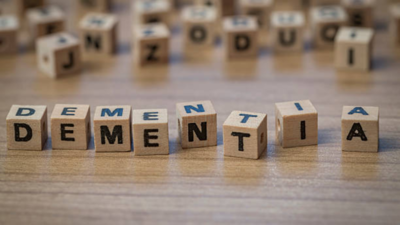In breakthrough study, scientists watch dementia unfold using live brain cells

For the first time, a team of researchers have used living human brain tissue to see how dementia unfolds in the brain cells.
“Experts said the new way of studying the disease could make it easier to test new drugs and boost the chances of finding ones that work,” The Guardian reported citing a study by researchers from the University of Edinburgh. “In the study, scientists and neurosurgeons in Edinburgh teamed up to show for the first time how a toxic form of a protein linked to Alzheimer’s, amyloid beta, can stick to and destroy vital connections between brain cells.”
Amyloid beta is a sticky protein that plays a big role in dementia, especially Alzheimer’s. In a healthy brain, it’s cleared out regularly. But sometimes, it starts to pile up and form clumps or plaques between brain cells kind of like unwanted gunk. These clumps mess with how brain cells talk to each other and can trigger inflammation, making things worse over time. This buildup is one of the early signs doctors look for when diagnosing Alzheimer’s.
For the study, the researchers collected tiny fragments of health brain tissue from cancer patients who were admitted at the Royal Infirmary of Edinburgh. The collected tissues were put in glass bottles filled with oxygenated artificial spinal fluid and taken to the lab for study. “There, samples were sliced into thin pieces, less than a third of a millimetre thick, and laid out in small dishes. Each piece of living brain tissue was kept in a nutrient-rich liquid, inside an incubator at 37C to mimic body temperature,” the report says.
The team found that when exposed to the toxic protein, the brain did not attempt to repair damage. “Even small changes in natural levels of amyloid beta – increasing or decreasing – were enough to disrupt brain cells. This suggests that the brain requires a finely tuned sweet spot of the protein to function properly,” Dr Claire Durrant, a Race Against Dementia fellow and UK Dementia Research Institute emerging leader at the Centre for Discovery Brain Sciences at the University of Edinburgh told the media outlet.
Hope for a cure for dementia?
“The use of living human tissue samples generously donated by people undergoing surgery to remove brain tumours allows scientists to probe how living human brain reacts to toxic proteins produced in Alzheimer’s, and in future will allow testing of whether new treatments are effective in human brain,” Prof Tara Spires-Jones, group leader at the UK Dementia Research Institute told the media.
This breakthrough will help scientists focus on identifying drugs most likely to prevent the loss of synapses—critical connections that enable communication between brain cells and are essential for healthy brain function. Alzheimer’s targets these synapses, and their deterioration is a strong predictor of memory loss and impaired cognitive abilities.
Dementia in the US
Dementia is becoming a major health challenge in the U.S., especially as the population ages. Right now, over 6 million Americans are living with Alzheimer’s disease, the most common form of dementia, and that number is expected to double in the next couple of decades. It’s not just about forgetting names or where you put your keys; dementia slowly affects thinking, reasoning, memory, and even basic day-to-day functions. It can hit families hard, both emotionally and financially, as care needs increase over time.
What’s worrying is that many people still confuse dementia with normal aging, which delays diagnosis and treatment. Scientists are exploring everything from lifestyle changes to experimental drugs that target harmful proteins like amyloid beta and tau.
The goal? Help people with dementia live with dignity and independence for as long as possible. It’s a tough journey, but with awareness, compassion, and science, there’s hope on the horizon.
















